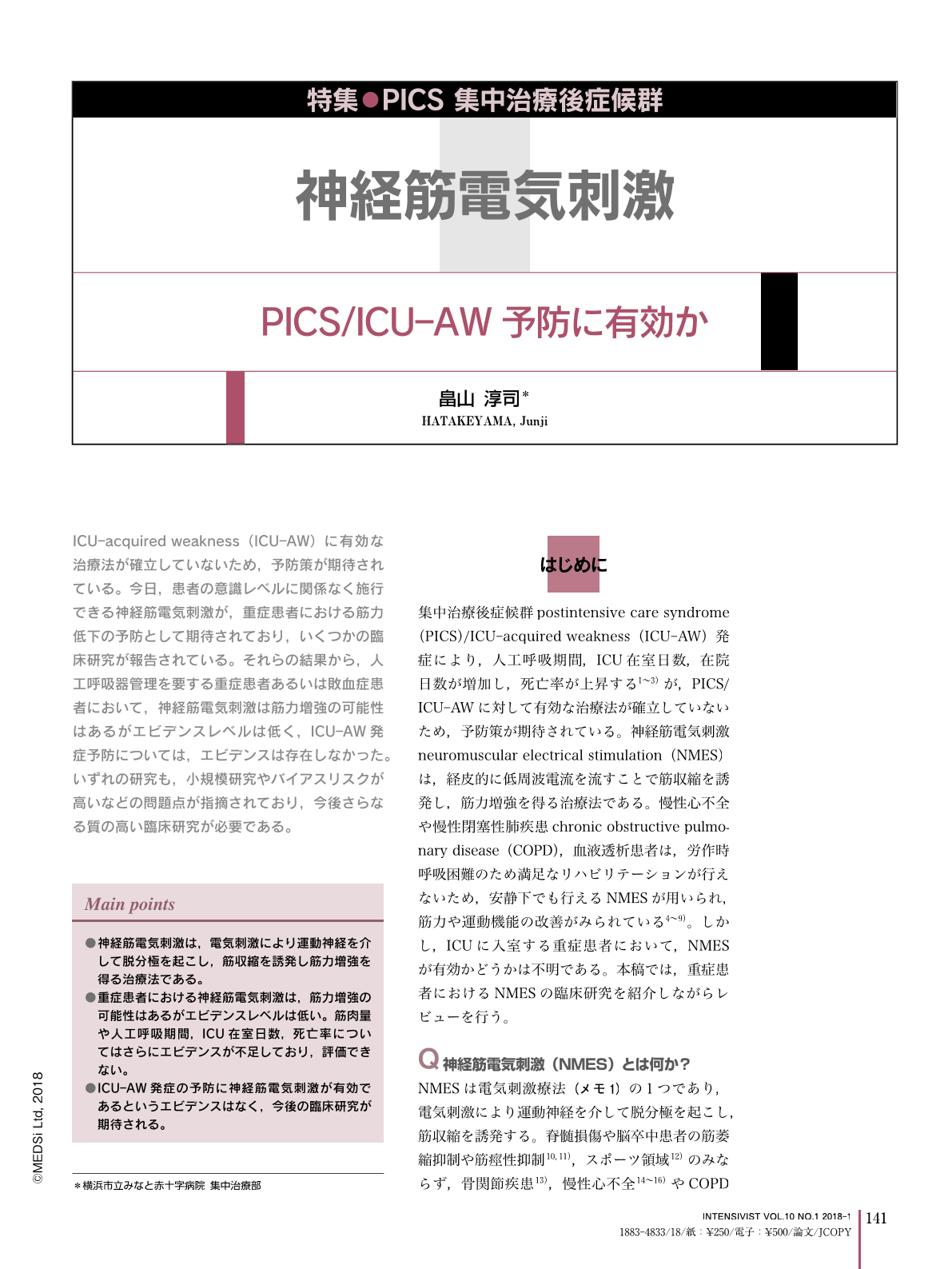Japanese
English
- 有料閲覧
- Abstract 文献概要
- 1ページ目 Look Inside
- 参考文献 Reference
ICU-acquired weakness(ICU-AW)に有効な治療法が確立していないため,予防策が期待されている。今日,患者の意識レベルに関係なく施行できる神経筋電気刺激が,重症患者における筋力低下の予防として期待されており,いくつかの臨床研究が報告されている。それらの結果から,人工呼吸器管理を要する重症患者あるいは敗血症患者において,神経筋電気刺激は筋力増強の可能性はあるがエビデンスレベルは低く,ICU-AW発症予防については,エビデンスは存在しなかった。いずれの研究も,小規模研究やバイアスリスクが高いなどの問題点が指摘されており,今後さらなる質の高い臨床研究が必要である。
Main points
●神経筋電気刺激は,電気刺激により運動神経を介して脱分極を起こし,筋収縮を誘発し筋力増強を得る治療法である。
●重症患者における神経筋電気刺激は,筋力増強の可能性はあるがエビデンスレベルは低い。筋肉量や人工呼吸期間,ICU在室日数,死亡率についてはさらにエビデンスが不足しており,評価できない。
●ICU-AW発症の予防に神経筋電気刺激が有効であるというエビデンスはなく,今後の臨床研究が期待される。
No consensus has been established regarding effective interventions to improve outcomes of patients who develop intensive care unit-acquired weakness (ICU-AW), and therefore, measures to prevent ICU-AW are drawing attention. In the past few years, neuromuscular electrical stimulation (NMES), with the benefit of feasibility regardless of a patient's mental status, has been evaluated as a potential preventive measure for muscle weakness in critically ill patients. The effectiveness of NMES on weakness in critically ill patients and patients with sepsis has been evaluated, but further investigations are needed due to insufficient quality of data with small sample sizes and a significant risk of bias. High-quality clinical trials are necessary to make definitive conclusions on the usefulness and safety of NMES for critically ill patients.

Copyright © 2018, MEDICAL SCIENCES INTERNATIONAL, LTD. All rights reserved.


